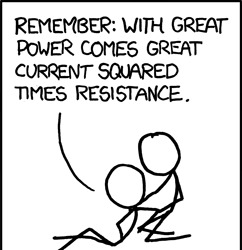#Ohms law
Note
Could you please explain Ohm's law?
sure, it's really simple! Ohm's law is this formula
V = I • R
where V is voltage, think of that like the potential for energy to flow from a given point; I is the current, which is the rate at which that energy flows; and R is the resistance, how much a circuit or component resists current moving through it.
to pass a given current through a conductor with some resistance, it'll require a certain voltage, ez pz. now let's use it

the big circle labeled V1 will be our power source, and the little zig zag labeled R1 is our resistor. let's say we need to put exactly 20 milliamps (0.02 amps) through that resistor, which has a resistance of 1000 (1k) ohms (Ω). to find what we'd need V1 to be, we just plug in the knowns into our handy formula
V1 = 20mA • 1000Ω
and we get
V1 = 20V
2 notes
·
View notes
Text
instagram
5 notes
·
View notes
Link
In this video, We take a look at Ohm's law to understand how it works and how to use it. We look at conductivity, conductance, resistance, resistivity, and the relationship between these. We also use the ohms triangle to solve examples. We have explained Ohm’s Low different forms and described important concepts.
We have solved many questions related to this at the end of this video. So check & watch for more information.
If you like these videos and want to learn from such videos for free. Watch our Engineers Platform YouTube Channel and don’t forget to subscribe to our channel for upcoming valuable technical information.
3 notes
·
View notes
Photo

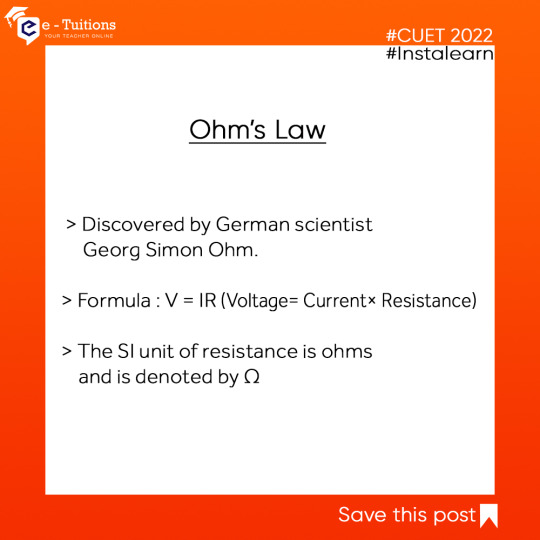
Ohm's Law is used to calculate the relationship between voltage, current, and resistance in an electrical circuit.
#ohms law#Onlinetuitions#onlineclasses#etuitions#sciencetuitions#cbseboard#cuet2022#college admissions#exampreparation
3 notes
·
View notes
Text
I’ve been finding Ohms law a little useful lately so I’ve been playing with some designs inspired by it - If in doubt consult Ohm’s law available with black white and blue text.

https://www.redbubble.com/shop/ap/16071678
https://www.redbubble.com/shop/ap/160716852
https://www.redbubble.com/shop/ap/160717030
#redbubble#redbubble artists#art#find your thing#findyourthing#artists on tumblr#artist#design#stemblr#stem#science#maths#mathematics#mathblr#engineering#tech#technology#nerd#geek#science gifts#ohms law#ohms triangle#Georgs Ohm#ohmslaw#electronics#math formulas#formulas#equations#steam
1 note
·
View note
Text
Honestly, if you’re not writing your electronic fundamentals notes as gay personifications what the fuck are you even doing?
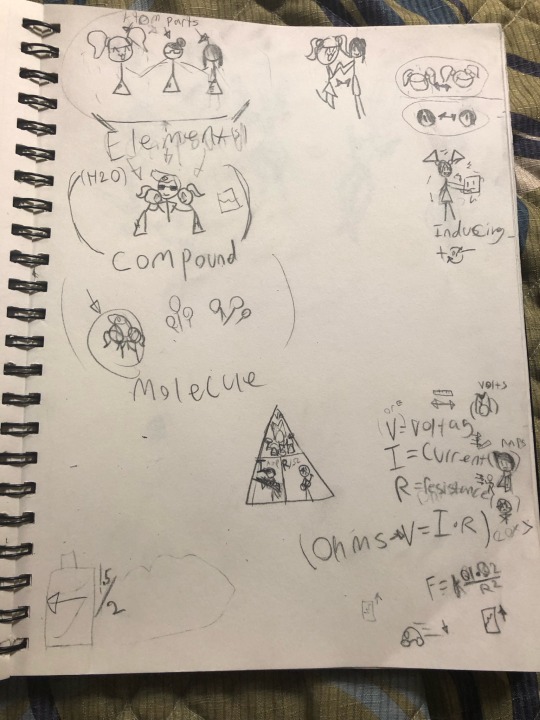

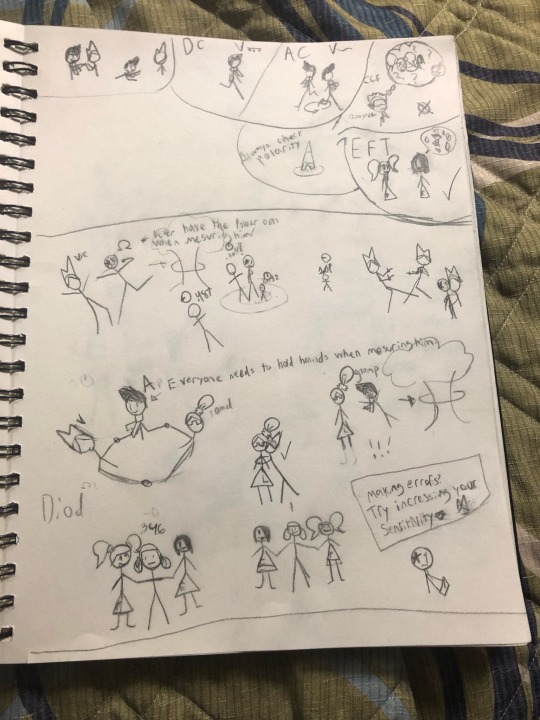





0 notes
Text
Which Thai QL actor is your teen self’s fantasy Valentine?
Thanks @he-is-lightning-in-a-bottle for the taggage! I tag anyone who wants to play.
As a noted iyf bisexual slut I activate my open season privilege and pick several, SO THERE. (was I out in high school? no. but don't bother me with trifles - unless it's actual trifle)

either but probably both

I'm trying to be as honest to my teen self as possible and I would just have found him The Prettiest. Also bonus points for deep voice, bit of a dork, and kinda calm and self effacing.

Although, to be honest, I would have had a mad crush but been very intimidated by her.
#asked and answered#memes gonna meme#who would teen me crush on#ohm thitiwat#thai bl#thai gl#thai ql#laws of attraction#until we meet again#Silvy Pavida#Organ Rasee#Yoshi Rinrada
30 notes
·
View notes
Text
Saw a bunch of people walking down a path then split off down two separate paths and I thought “oh yes just like kirchoff’s junction law” and I immediately knew what it was like to be Donnie.
56 notes
·
View notes
Text
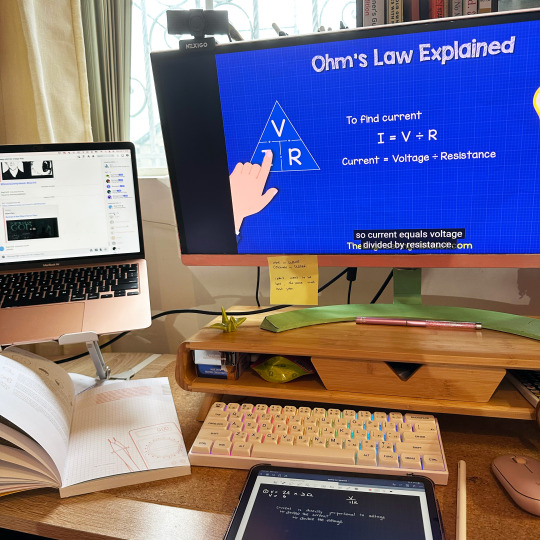
if rainy_day:
print("stay inside and study")
studying ohm's law in order to understand what i'm actually doing with my arduino starter kit...
#compsci#computer engineering major#ohm's law#studyblr#rainy day#cozy study#studyspo#study aesthetic#mechanical keyboard#macbook air#ipad mini#arduino#goodnotes#computer engineering
43 notes
·
View notes
Text
Someone please parallel Tinn and Pat with the "what's my score?" thing PLLSSSS 🤣🤣🤣
#i mean also ive just been thinking they look so much like nanon and ohm this whole time i would for all for of them in a show together#laws of attraction the series#tinncharn#bad buddy#bad buddy x our skyy 2#bad buddy x atots#patpran
16 notes
·
View notes
Text
HOLY FUCK I LOVE LEARNING I LOVE KNOWING THINGS I LOVE GOING AT MY OWN PACE AND EXPLORING TOPICS I'M INTERESTED IN
5 notes
·
View notes
Text

eārth cerēmōny .:. @earthjournalbyawildrose
source
#gaia#earth#ceremony#sacred#ritual#rituals#ceremonies#the sacred feminine#sacred art#spirituality#nature#witch#witchcore#meditation#ohm#singing bowls#spiral#law of attraction#photography#self portrait#nature photography#naturecore#earthcore#dark core#academia#dark academia#gothcore#grungecore#witchcraft#forestcore
4 notes
·
View notes
Link
In this video, They take a look at Ohm’s Law to understand how it works and how to use it. We look at conductivity, conductance, resistance, resistivity and the relationship between these. We also use ohms triangle to solve examples. They have explained Ohm’s Law in different forms and described important concepts.
They have solved many questions related to this at the end of this video. So check & watch for more information.
If you like these videos and want to learn from such videos for free. Watch our Engineers Platform YouTube Channel and don’t forget to subscribe to our channel for upcoming valuable technical information.
1 note
·
View note
Text
Him: Are all men fool?
Me: Maybe, I don't know.
Him: But women say they are not less than men? So they are all also fools?
Me: Now this proves men are fool because they don't know that this thing doesn't apply to this field just like they are fool enough to not know that Ohm's law can't be applied when temperature isn't constant, so yeah, women might not be fool, but men are.
11 notes
·
View notes
Text
Practical RF Design Manual
[Practical RF Design Manual by Doug DeMaw (Milton F "Doug" DeMaw). 1997. MFJ Publishing. 2nd Edition 1997 : 246 pages. ISBN 1-891237-00-4]
For many years I was an amateur radio - "ham radio" - operator, beginning when I was 13 years old and going up until I was about 40 years old. For those who are interested, my call sign was WA6FEB and I held an Extra Class ham radio license (this is the highest classification). My fascination with radio was fostered by my step-father, the late Sam Martin (WB6WZN, later N7TBV), who had learned his electronics and radio theory while serving in the US Navy.
Sam had many years’ worth of a magazine called QST, which was one of the premier journals available for ham radio enthusiasts. Doug DeMaw, the author of the book under review here, was a prolific contributor to QST and to other ham radio publications. I was (and remain) a huge fan of his writings, especially his transmitter and receiver projects for ham radio folks.
What I did not know then, but have come to learn, is that DeMaw was truly a world-class electrical and electronic engineer. He was known to much of the world as a ham radio person first and foremost, but he was a professional engineer who had an extraordinarily broad grasp of all aspects of radio transmission and reception, covering all power levels from the very tiny (what we in the ham radio community called QRP, or low-power, operation, usually less than 1 watt) to the industrial (the 50,000-watt and 100,000-watt “clear channel” broadcasts from commercial radio stations, for example). DeMaw was well-versed in design considerations spanning operating frequencies from the US AM broadcast band (560 KHz to 1600 KHz) all the way up to the UHF range (where television broadcast channel 14 begins in the US, or around 470 MHz and beyond). His knowledge went beyond component-level design of devices to include the design and tuning of antennas and other auxiliary devices to aid in the radio experience.
All of this knowledge is subsumed under the aegis of RF - radio frequency. RF in modern terms is usually linked to RF ID chips, which are becoming quite common in scenarios that require tracking (such as shipment packages), but this is a very restricted window into the RF world. To really see just how vast an enterprise RF electronics is, one might consult this book.
This volume is truly a gem. I dearly wish I had access to it back in the early 1970s when I was first getting into radio. It would have illuminated a lot of practical design issues for me, especially on the design of receivers. Receivers are generally more complicated and finicky than transmitters – it’s easier to generate radio energy and cast it out into the universe than it is to gather it in and make sense of it. This book leads the reader through 7 broad-based topics and roughly 40 overall subsections within those topics, starting with transmitter and receiver fundamentals and leading the reader through considerations related to power regulation, signal quality, the use of different types of components for different frequencies of operation and different power levels, and so on.
Unlike much of DeMaw’s writing with which I had been previously acquainted, this book is definitely not a book for someone looking to do a home project. There are no comprehensive instructions on assembling or testing transmitters, receivers, or other associated machinery. This book is written for a true engineer who wants to become familiar with many (most) of the gotchas that accompany real in-the-trenches electronic engineering work. And in this vein, this book is as useful to a professional radio engineer (such as someone who is the engineer-in-charge at a radio or television station, for instance) as it is to a radio hobbyist. It is also not the sort of book from which to learn first principles of electronics; for this, there are many more suitable books that introduce electronics at the most elementary level (Ohm’s Law, Kirchhoff’s Law, how vacuum tubes and transistors work, what makes oscillators work, and so on). This book assumes that the reader already has some engineering skin in the game, as the saying goes.
Whom would I recommend this book to? Anyone who wishes to know something about electronics that precedes the modern all-digital era where whole systems are embedded on integrated circuit (IC) chips. While those circuits may make for easier and more controlled design, they take away a lot of the learning, guesswork, and outright fun of figuring these things out for yourself. DeMaw’s work hearkens back to what many of us current and former ham radio people think of as a sort of golden era of communications – a time before cell phones and before email.
A couple of comments about the text itself:
There are some typos both in the text and on the many diagrams. For the most part these are easy to spot if you are already versed in basic electronics, but they would be profoundly confusing to someone who doesn’t know what they’re looking at. Anyone who doesn’t know how to read a basic schematic diagram of a circuit will not find this volume very helpful.
Bearing in mind that some of the material in this book dates to the 1970s and 1980s, it is possible that some of the actual components cited in the text no longer exist or are not easily available. Happily, the author describes them in sufficient detail that a modern engineer or hobbyist can find current components whose characteristics match what DeMaw had at his disposal when the book was written. DeMaw was fairly fastidious about describing the important pieces of each circuit or circuit fragment in the book. One needs but to pay attention to the text to make the connection.
I was delighted to read through this volume. I am not currently an active hobbyist, but as I near retirement age, I am giving a return to ham radio serious thought. With that in mind, this book will be an invaluable title in my collection when I once again wield a soldering iron and set out to make some more home-brew radio equipment as I did so many years ago.


[Photo credits with thanks to : Book Cover of 2nd edition 1 August 1997 © 1997 M F J Enterprises Inc / Portrait © Copyright Holder (apologies not known)]
Kevin Gillette
Words Across Time
10 January 2023
wordsacrosstime
#Kevin Gillette#Words Across Time#wordsacrosstime#Practical RF Design Manual#Doug DeMaw#January 2023#Ham radio#US Navy#QST#Transmitter#QRP#Antenna#Radio Frequency#Power Regulation#Signal Quality#Electronic Engineering#Television Station#Radio Hobbyist#Ohm’s Law#Kirchhoff’s Law#Vacuum Tube#Transistor#Oscillator#Receiver#Sam Martin#Amateur Radio
6 notes
·
View notes
